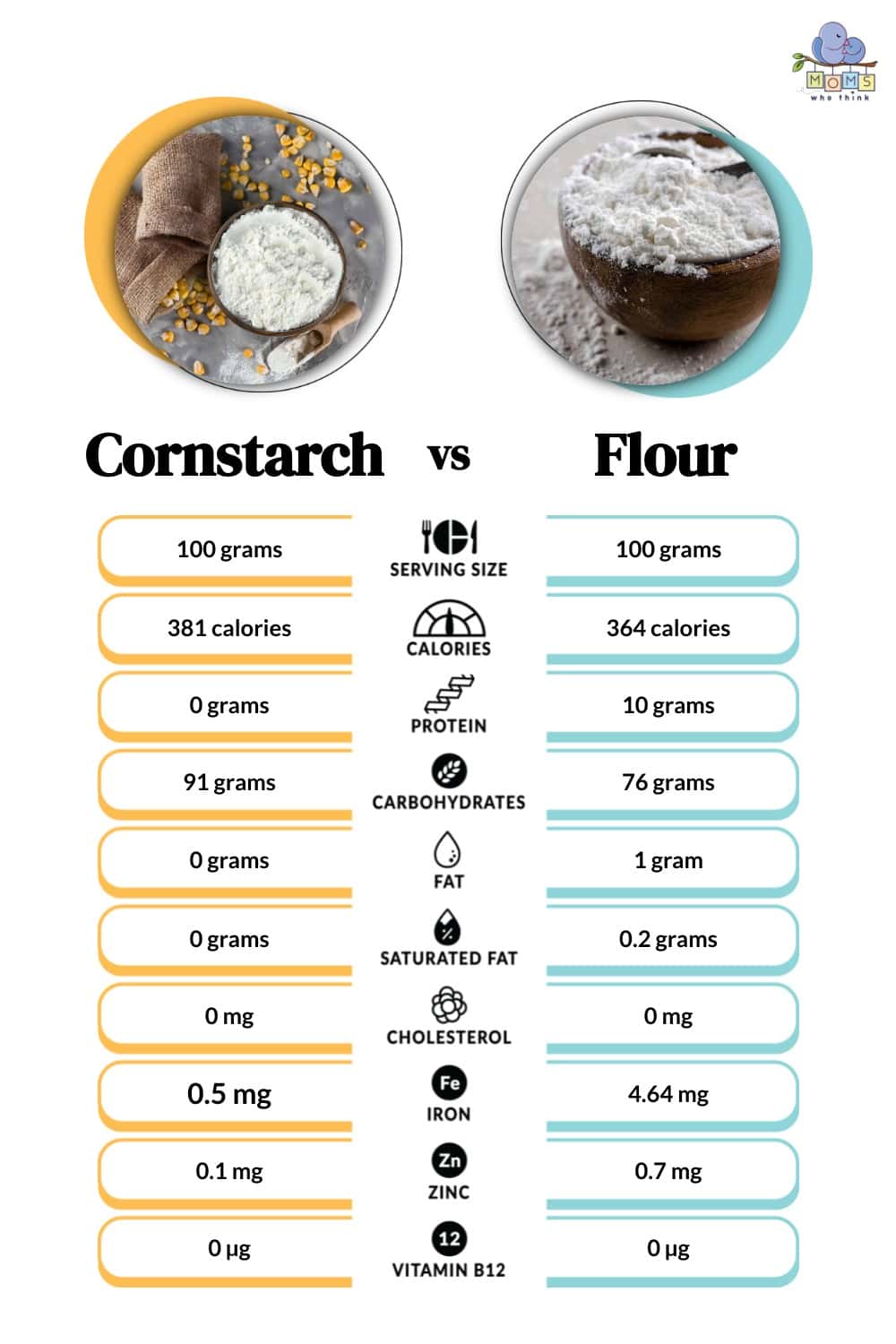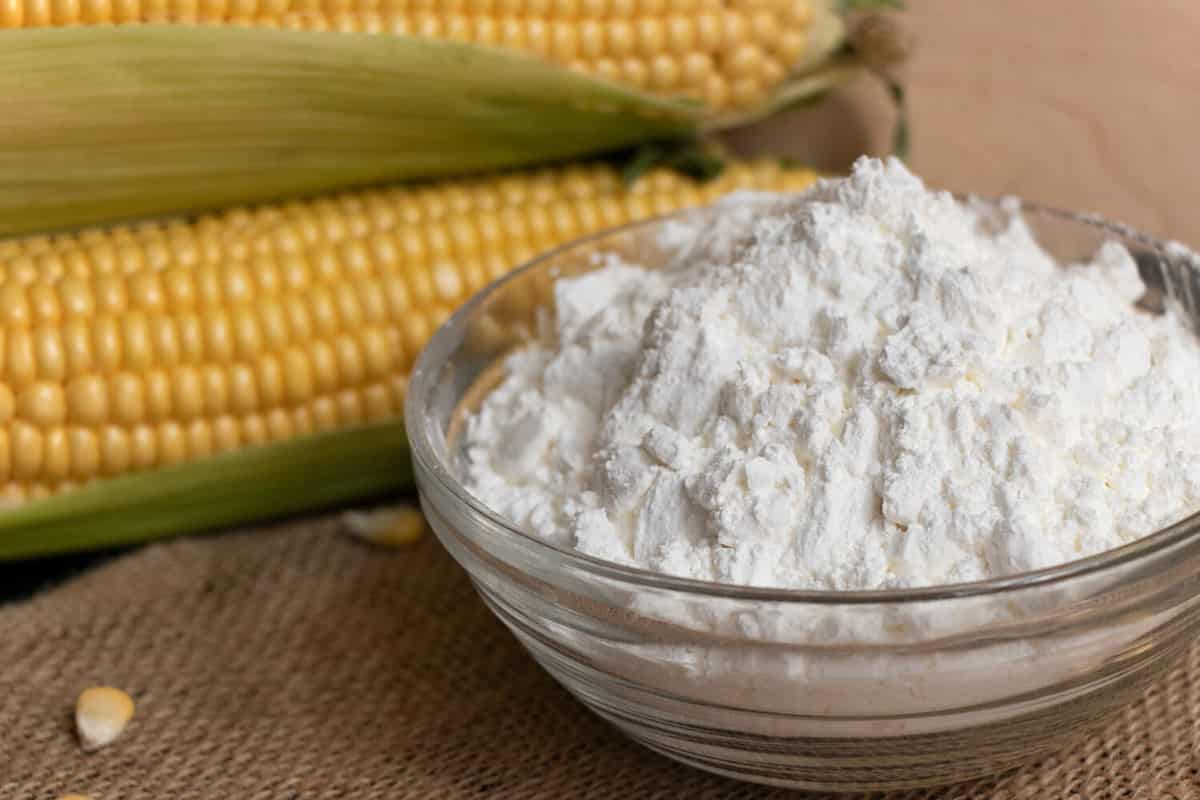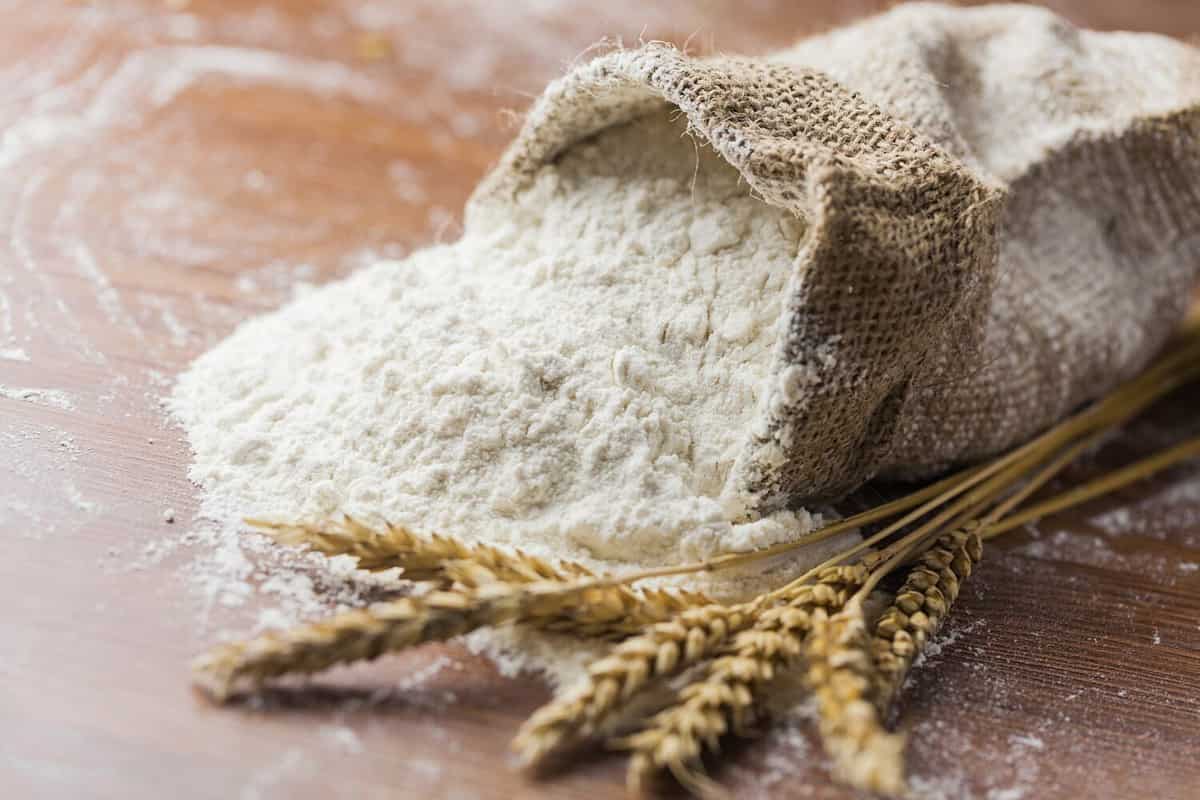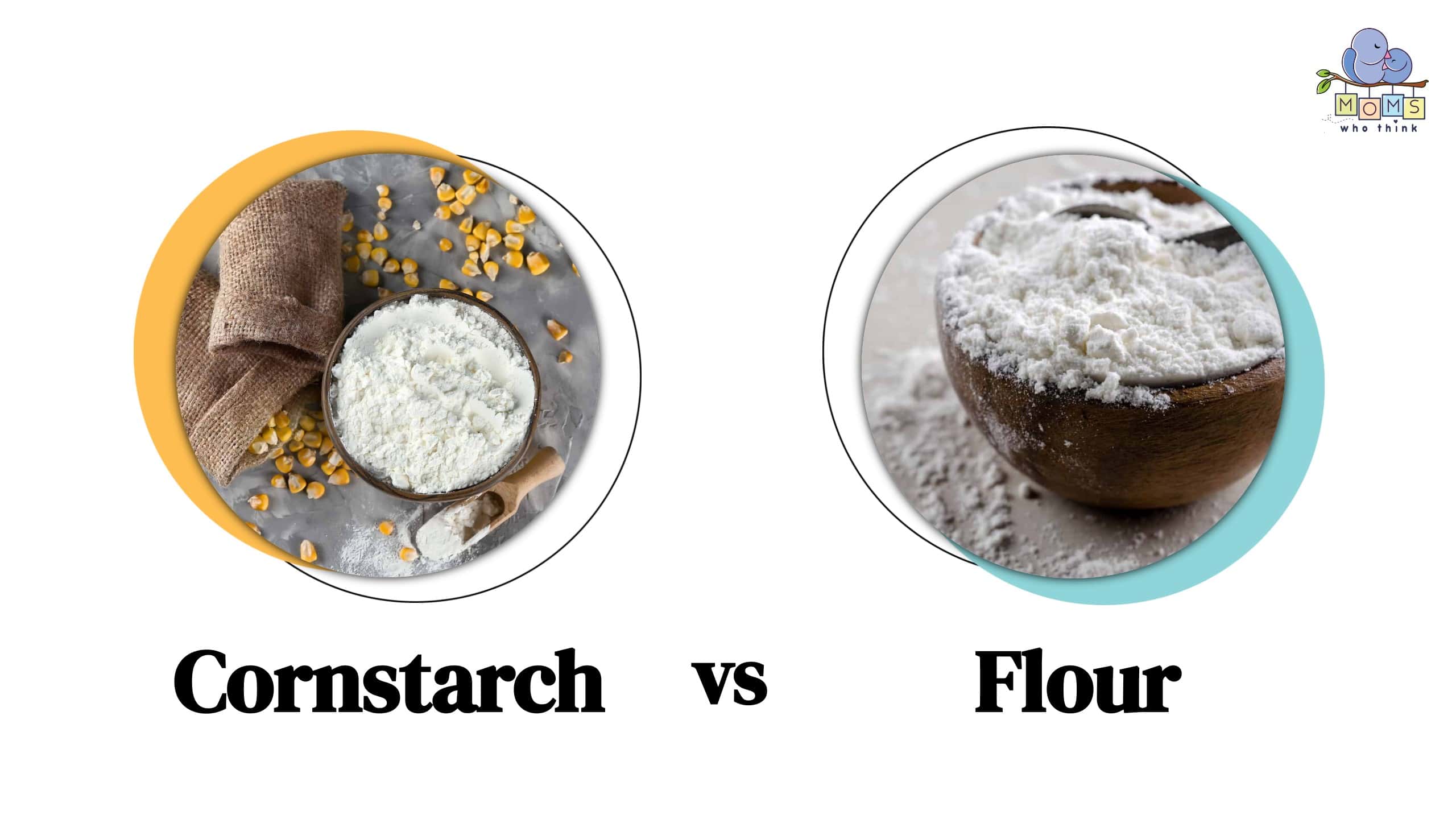Everyone who has ever cooked or baked is familiar with the kitchen staples cornstarch and flour. Both are commonly used in cooking and baking. While they have some obvious distinctions, you aren't going to make a loaf of bread with cornstarch, but you can use both to make a batter or bulk up soups and stews. Both flour and cornstarch should be in your pantry because they are used in many recipes.
Don't make the mistake of confusing cornstarch with corn flour. Corn flour is flour made from ground corn and is common in Mexican foods like tortillas and empanadas. Cornstarch is made from the starchy part of the corn kernel and is not a suitable substitute for corn flour. If you have ever wondered when it comes to cornstarch vs. flour which one to reach for, let us help you understand the difference between these two powders in your kitchen cupboard.
Cornstarch vs. Flour: The Key Differences
Let’s start with the obvious difference: cornstarch is made from corn, and flour is made from wheat. Both are used to thicken stews, gravies, and sauces. They will give them a thick texture, but using cornstarch won't change the color, and using flour will turn the sauce a darker color. They can both be used together in baked goods, but while you can have baked goods made with just flour, omitting the cornstarch, you can't have baked goods with only cornstarch and no flour.
It is easy to tell the difference between the two powders by look and touch. Cornstarch is grainy, like a cross between sand and flour. It has almost a stickiness to it despite the fact that it's a powder. If you put some between your thumb and forefinger, you can feel its viscosity. In contrast, flour is softer and more like a powder and doesn’t have that same feel as cornstarch. Interestingly, cornstarch originated as a laundry aid to starch shirts and then later was used in the kitchen.
Cornstarch vs. Flour: Nutritional Differences

The biggest nutritional difference between cornstarch and flour is protein. Cornstarch is pure carbohydrate and doesn’t have any protein, which is why it is gluten-free. Flour has 10 grams of protein per 100 grams or ⅔ of a cup. Cornstarch has more calories and carbohydrates than flour. But anyone following a low-carb diet should steer clear of both cornstarch and flour.
As far as nutritional value, cornstarch lacks any real substance. According to Healthline, it has trace amounts of nutrients. It is valued for the texture and not the vitamin and mineral content. Flour, on the other hand, has some slight nutritional benefits with protein, selenium, folate, iron, and riboflavin. Most white all-purpose flours are enriched to add some nutritional value.
What is Cornstarch?

Cornstarch has a unique texture.
©Juli_li_Photographer/Shutterstock.com
Cornstarch is a processed starch made from corn. It was first processed in 1854 and is currently used in many different ways in the home. In the kitchen, cornstarch is a common way to thicken gravies and sauces. It is used in batters to fry foods and coat meats before sauteeing. And it is common to find it in packaged foods and frozen meals. Cornstarch is naturally gluten-free, making it safe for those who avoid gluten. However, always check the packaging and label because some brands of cornstarch are made at the same facility where wheat products are made, so if gluten is an issue, always read labels carefully.
The kitchen isn't the only place in the home to use powdery cornstarch. You can use it as a stain remover on carpets and furniture, to polish silverware, as a starch for ironing clothes, and even as a dry shampoo for pets. It is easy to find in any supermarket, usually near the baking products like flour and sugar. Every home pantry should have cornstarch.
What is Flour?

All-purpose wheat flour is the most common flour.
©Billion Photos/Shutterstock.com
You most likely have a bag of flour in your cupboard right now. But do you really know what it is? Flour is a powder made from grinding raw grains. There are many types of flour, and the most common that people have in the kitchen is all-purpose white flour. All-purpose white flour is made from wheat that has been ground. There is bleached and unbleached flour used for different purposes. Bread flour is a high-gluten flour used to make bread, pizza, focaccia, and other yeasted products. In Italy, many pizza makers use a flour called 00 flour that is fine, like baby powder.
Different Types of Flour
There are a lot of alternative flours on the market. This is partly because there is a need as more and more people are stepping away from wheat flour due to gluten insensitivities or Celiac disease. While others are looking for healthier versions of flour for other dietary reasons. Some alternative flours are made with rye, almond, quinoa, coconut, rice, buckwheat, soy, spelt, oat, amaranth, arrowroot, peanut, and millet, just to name a few.
How to Use Cornstarch
Cornstarch has many uses in the kitchen; think of it as a helper. It isn't the main ingredient in any dish; instead, it assists other dishes and improves texture and viscosity. You can use cornstarch in gravy and stews. In stews, it can be added in to thicken the liquid part or used in a cooking technique called velveting. Velveting is coating the protein, like beef, chicken, or pork, with cornstarch before frying it and adding it to the stew. This technique is also common in stir fry recipes because it gives the meat a smoother texture, and the sauce and spices stick better. If you have been wondering why your homemade stir fry isn’t as good as your favorite restaurant, you might want to try this cornstarch tip and see for yourself the difference that it makes.
Cornstarch is also used to thicken sweet puddings and pie fillings. Fresh fruit is often coated with cornstarch before adding it to pies, cobblers, and crisps because it forms a gel and keeps the fruit from releasing too much water and making the final dessert too wet.
How to Use Flour
Let's count all the ways you can use flour, or maybe not because we would be here all day because flour is used in so many things. Let's start with the basics, like bread and bread products. It's the critical ingredient in pie crust, cookies, cakes, croissants, and many other baked goods. And like cornstarch, it can be used to thicken gravy or make a roux.
Whole wheat flour is different than white flour because it uses the healthiest part of the wheat, the bran, and the germ, and those two things are where the health benefits come from. Many home bakers opt to use whole wheat flour instead of white to make a healthier product. But there are some downsides that can affect the fluffiness of the baked goods. One idea is to mix half whole wheat flour with half white to get some of the health benefits but not alter the final product too much.
Three of the healthiest alternative flours on the market are coconut, almond, and buckwheat flour. Coconut flour comes from dried coconuts and is naturally sweet, so it makes a perfect substitute for regular flour in baked desserts. And almond flour is popular in the keto and low-carb world. Unfortunately, it can be expensive to use regularly. Buckwheat flour, which is the key ingredient to Japanese soba noodles, has prebiotics and is a great flour substitute for anyone with constant gut issues.
In Conclusion
The bottom line when it comes to cornstarch vs. flour is that they both serve a purpose in the home. Every home cook should know how to use these staples in their favorite recipes.

